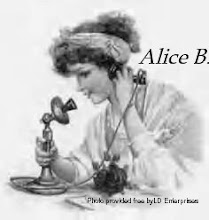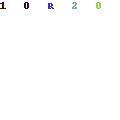"You are surrounded by simple, obvious solutions that can dramatically increase your income, power, influence, and success. The problem is, you just don't see them."
Jay Abraham
The Four-Legged Stool
Years ago, I was given a challenge by a client of mine. They asked me to help them create stronger direct-mail advertising packages than those being used by their main competitor.
Problem was, there didn't seem to be anything wrong with the packages my client was using. They had good products. And they were well known in the industry for writing highly effective advertising copy to sell those products.
In fact, they were the second most successful direct marketers of investment newsletters in the world at that time. Their competitor was somehow beating them. But neither they nor I knew why.
A wiser man than I would have demurred on the spot. They wouldn't have thought less of me had I said, "I don't think I can help you with that."
But the feather they were offering to put in my cap was a big one: I could be the genius that made them number one. Ego gratification, they knew, was my Achilles heel. I told them I would do it.
And so I did.
It took me about six months of research and testing to find a formula that worked. And that formula, when implemented, brought us quickly and permanently into the number one position.
What I discovered was that my client's competitor was using a four-part strategy to ensure that their packages were as strong as they could possibly be. I'm not even sure if they were conscious of it, but every one of their packages had these four elements:
1. An emotionally compelling idea - one big, unifying concept that pulls the sales argument together and (usually) expresses the product's USP (unique selling proposition)
2. A promise of irresistible benefits -- how the product will help the prospect
3. Proof of every claim made in the package
4. Loads of credibility -- for the product, the guru behind it, and the company selling the product
"Our copy is good," I told my client's writers. "But it is almost always missing one of those four elements -- loads of credibility. It is like a four-legged stool with one leg chopped off. It will stand so long as you don't shake it around. But if you do, it will topple over."
Our customers, I explained, like to shake our promotional packages around. They are intrigued by the ideas and the promises we make, but they have been disappointed before when buying similar products. So they are unlikely to make a buying decision if, upon shaking the sales argument, it collapses.
When the missing element was inserted, our packages started beating the competitor's. Eventually, we dominated the market -- and still do today.
I've successfully used the same formula with many other clients in many different industries, including one in the health information business. By structuring his promotions in this way, he was able to grow his company from zero to more than $10 million in less than three years. And now he never, ever lets a package go out if it doesn't pass the "four-legged-stool" test.
The four-legged stool is one of the most important concepts taught in AWAI's Accelerated Program for Six-Figure Copywriting -- with good reason.
So from now on, whenever you write or review a promotional package, take the time to analyze it from this point of view. Ask yourself: What -- and how strong -- is the unifying idea? What -- and how strong -- are the promises? Does the copy provide proof for all claims -- a full track record of performing as promised? Does it establish the credibility of the product and the product provider?
A couple of years ago, I had a marketing meeting with one of the companies I consult with. Our goal was to review and revise an e-mail promotion for a great new coaching program on "selling yourself" headed up by self-promotion maestro Bob Bly.
The promotion had gone out several weeks earlier, with disappointing results. Not surprisingly, it had been written by a new copywriter, and new copywriters tend to rely almost exclusively on slathering on the benefits.
When I saw it online, I sent a note to the director of marketing, telling her that I thought it was weak and offering to help make it better.
She sent her "A" team to the meeting: Eric, Sandra, and Wendy. The only person missing was the copywriter. It was just as well, because it allowed me to explain to them the many things wrong with the copy he had written. One of the most fundamental errors? It was lacking three of the four elements that every advertising promotion should have:
1. A Big Idea
2. The promise of benefits
3. Proof of past performance
4. Demonstration of credibility
The copy I read was full of benefits -- and that was good. But there was no single, captivating idea to hold the promotion together. And there was nothing at all about how much Bob Bly has done to help fledgling copywriters promote themselves.
"If you asked me who the number one 'sell yourself' master in the world is," I told the marketing team, "I'd have to say it is, without question, Bob Bly."
They nodded their heads.
"But look at the copy. There's nothing about how good he is at teaching this critical success skill. No endorsements from other professionals. No examples of people he's helped. And except for the personal story from the person who is signing the sales letter, there are no testimonials from people who've benefited from Bob's advice."
I told them to compare the copy in front of them to copy they've seen from Gary Halbert, Jay Abraham, and Clayton Makepeace -- three gurus who regularly sell their advice and coaching services to the same market this program is aimed at. "At least half of their copy is devoted to credibility building and track record," I reminded them. "Why doesn't this promotion do that?"
I went through the promotion, inch by inch, identifying where it missed the mark and explaining why. Then we did the more important work. We roughed out an outline for a promotion that contained all the essential elements of the four-legged stool. By dealing with them one at a time, we were able to generate something that got us all excited.
"This is going to be good," Eric said.
"I think it's going to work really well," Wendy agreed.
In less than an hour, we had developed a strong outline for what became a very powerful promotion.
I enjoyed my hour with Sandra, Wendy, and Eric -- and not just because they are charming, smart, and entertaining people. I like being able to figure out what is wrong with a marketing campaign and fixing it. And when the fix is good -- as this one seemed to be -- I feel like I've made a worthwhile contribution.
The only downside to our meeting was that we didn't have an experienced copywriter there with us who could begin working on the outline we came up with immediately. I've found that copy sessions yield the best results when there is a gifted writer present to take notes and then use them and a tape recording of the session to create new copy as quickly as possible -- optimally, within 24 to 48 hours.
"You've taught me an important lesson today," Sandra said. "I need to look at all promotions with this matrix in mind. What's the Big Idea? And where are the benefits, track record, and credibility?"
As I mentioned earlier, this four-legged stool is one of the most important lessons in AWAI's Accelerated Program for Six-Figure Copywriting. But there are dozens of other strategies, techniques, and "tricks" for writing winning copy in the program. Whether you're interested in copywriting as a part-time or full-time freelance career -- or you want to improve the advertising (and boost the sales) of your own business -- you can benefit from taking this course.
Check it out here.
[Ed. Note: Michael Masterson welcomes your questions and comments. Send him a message at AskMichael@ETRFeedback.com.]





No comments:
Post a Comment